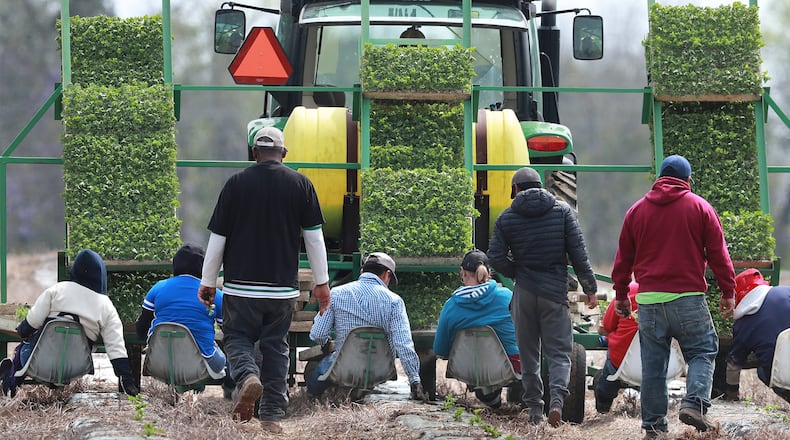In Georgia, beginning farmers are helping to change the face of the industry, and the use of renewable energy on farms is taking off.
That’s according to the 2017 Census of Agriculture, released Thursday by the U.S. Department of Agriculture. It offers a range of information about the 2.04 million farms and ranches in America and includes new data on farm decision-making, better reflecting the role of women.
One-third of all producers in Georgia identified themselves as beginning farmers, those with 10 or fewer years of farming experience. The state ranked second (tied with Maine) for the percent of producers who are beginning farmers. Nationally, beginning farmers have an average age of 46.3 and operate farms that are smaller than average in both acres and sales.
And with another nod to the future, the number of Georgia farms using renewable energy producing systems — mostly solar panels — more than doubled from 343 farms in 2012 to 946 in 2017.
The plight of American farmers has been a consistent headline as the industry has faced ongoing financial challenges in recent years, but on the whole, farmers are holding steady, particularly in Georgia. However, since the census was taken, Hurricane Michael last fall delivered a blow to the state's farmers that's still being felt.
>>RELATED: Southwest Georgia farmers wait in pain as storm aid stalls in Congress
“While the current picture shows a consistent trend in the structure of U.S. agriculture, there are some ups and downs since the last census,” said Hubert Hamer, administrator of the National Agricultural Statistics Service, which collects the census data.
Though the total number of U.S. farms is down 3.2% from 2012 — the date of the last census — in Georgia there was a slight increase in the total number of farms from 42,257 in 2012 to 42,439 in 2017.
Nationwide, the number of very large farms (sales of $5 million or more) and very small farms (sales of $2,500 or less) increased, according to the 2017 census. The 76,865 farms in the U.S. with sales of $1 million or more are fewer than 4% of farms but sold more than two-thirds of all agricultural production.
In an effort to better reflect the individuals involved in decision-making on farms, the 2017 census allowed farms to name multiple principal producers. In the past, farms were asked to name a single principal operator.
As a result of the change, the number of female producers on farms increased almost 27%, with most involved in day-to-day decisions, record-keeping and/or financial management on the farm. Still, the majority of U.S. farmers are male (64%), white (95%) and skew older with an average age of 57.5 years.
The top five commodities in the country — cattle and calves, corn, poultry and eggs, soybeans and milk — account for 66% of total U.S. agricultural sales. Poultry and eggs rank third with $49.2 billion in sales, and Georgia is the top state in poultry and egg sales, accounting for 11% of the U.S. total.
Georgia also posted gains in organic farming with a 73% increase in the number of farms with USDA National Organic Program certified organic production, growing from 51 farms in 2012 to 88 in 2017.
The USDA Census of Agriculture was first conducted in 1840 as part of the decennial census. Since 1982, it has been taken every five years. The latest census was initially scheduled for release on Feb. 21, but the date was pushed back when the lapse in federal funding due to the government shutdown prevented the National Agricultural Statistics Service’s Agricultural Statistics Board from collecting data or issuing reports.
The report was released a day after Gov. Brian Kemp issued a statement demanding action from Congress on delivering recovery funds to farmers impacted by Hurricane Michael. "Georgia farmers, who suffered generational losses during Hurricane Michael, are on the verge of bankruptcy," Kemp said in a statement. Hurricane Michael made landfall on Oct. 10, leaving $2.5 billion in damage to Georgia crops. Georgia has received no disaster relief funds appropriated by Congress since the storm's damage.
About the Author
Keep Reading
The Latest
Featured



